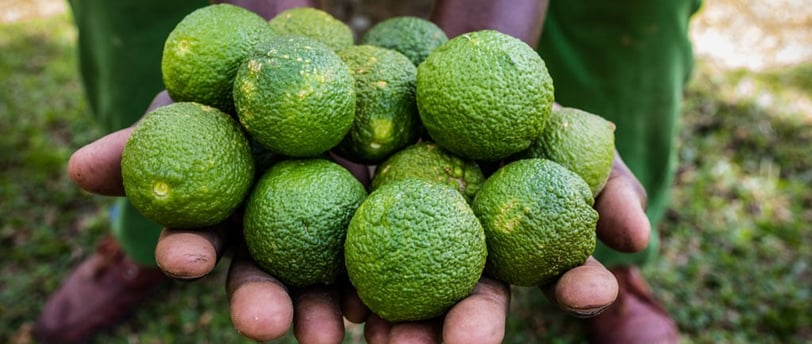The Ultimate Guide to Maximizing Lime Production and Profitability in Kenya
Lime farming is becoming increasingly popular in Kenya due to the high demand for limes in homes, hotels, and hospitals. Their numerous health benefits and year-round market stability make them an attractive venture for farmers looking for profitable agribusiness opportunities. If you’re considering growing limes, this guide will walk you through essential aspects such as increasing lime production, the best fertilizers, the ideal growing season, the time it takes for limes to reach maturity, and the most suitable lime varieties for Kenyan farmers.
Idea Pitch
2/21/20254 min read


The Ultimate Guide to Maximizing Lime Production and Profitability in Kenya
Lime farming is becoming increasingly popular in Kenya due to the high demand for limes in homes, hotels, and hospitals. Their numerous health benefits and year-round market stability make them an attractive venture for farmers looking for profitable agribusiness opportunities. If you’re considering growing limes, this guide will walk you through essential aspects such as increasing lime production, the best fertilizers, the ideal growing season, the time it takes for limes to reach maturity, and the most suitable lime varieties for Kenyan farmers.
Best Lime Varieties to Grow in Kenya
Choosing the right lime variety is crucial for high yields and profitability. The best lime varieties suited for Kenya’s climate include:
Tahiti Lime (Persian Lime) – Known for its seedless, juicy fruits and high resistance to diseases. It thrives in warm climates and is ideal for both local and export markets.
Kagzi Lime (Indian Lime) – A small, round lime with high juice content and strong aroma. This variety is popular for home and commercial farming.
Key Lime (Mexican Lime) – A fast-growing variety with a tangy flavor, perfect for making lime juice and other value-added products.
Bearss Lime – A hybrid lime variety that produces large, juicy fruits with a thin peel, suitable for large-scale farming.
Sweet Lime (Mosambi) – A less acidic variety used in making fresh juice and has a sweeter taste compared to other limes.
These varieties are well-adapted to Kenya’s diverse climatic conditions and ensure good market returns when grown with proper management practices.
Where to Get Lime Seedlings in Kenya
For farmers looking to start lime farming, getting high-quality seedlings is crucial for good yields. Below are some reliable sources of lime seedlings in Kenya:
Kenya Agricultural and Livestock Research Organization (KALRO) – KALRO offers certified lime seedlings and expert advice on citrus farming.
Horticultural Nurseries – Various horticultural nurseries across the country supply grafted and hybrid lime seedlings. Check reputable nurseries in regions such as Thika, Naivasha, and Machakos.
County Agricultural Offices – Many county governments provide subsidized fruit seedlings, including lime, to farmers.
Online Agribusiness Platforms – Platforms like iAgri, Mkulima Young, and social media agribusiness groups offer access to trusted lime seedling suppliers.
Private Farms and Citrus Growers – Established citrus farmers often sell quality grafted seedlings, especially in lime-growing regions like Embu, Kirinyaga, and Taita Taveta.
When purchasing seedlings, ensure they are disease-free, healthy, and well-grafted for faster growth and higher yields.
How to Increase Lime Production
For a successful lime farming business, maximizing production should be your top priority. Here are key strategies to ensure high yields:
Choose the Right Variety – Select high-yielding lime varieties suited to your region’s climate.
Soil Preparation and Fertility – Limes thrive in well-drained loamy, medium black, or alluvial soils. The soil should be rich in organic matter and well-aerated to encourage root development. Conduct a soil test to ensure a pH level between 5.5 and 7.5 for optimal growth.
Proper Spacing and Planting Techniques – Lime trees require adequate spacing to grow vigorously. A recommended spacing of 5m x 5m ensures good air circulation and prevents overcrowding. Dig holes of 60cm x 60cm and at least 2 feet deep, incorporating well-decomposed manure before planting.
Irrigation and Water Management – Although limes can tolerate dry conditions, consistent watering, especially during the dry season, significantly boosts production. Avoid waterlogged areas, as excess moisture can lead to root diseases.
Pruning and Pest Control – Regular pruning helps shape the tree, remove diseased branches, and improve air circulation. Effective pest and disease control through organic or chemical means ensures healthier trees and increased fruit production.
Best Fertilizer for Lime Trees
To get the best yield, using the right fertilizers is essential. Lime trees need a balanced supply of nutrients throughout their growth cycle. Here are the best fertilizers for optimal results:
Organic Manure – Well-rotted compost or farmyard manure enriches the soil with essential nutrients and improves its structure.
Nitrogen-Rich Fertilizers – Limes require a high nitrogen supply for vigorous growth. Apply ammonium sulfate or urea regularly, especially in the early growth stages.
Phosphorus and Potassium – Use phosphate fertilizers like DAP (Diammonium Phosphate) to promote strong root development. Potassium-based fertilizers such as muriate of potash improve fruit quality and disease resistance.
Micronutrients – Zinc, magnesium, and iron are crucial for lime tree health. Foliar sprays containing these nutrients enhance leaf development and fruit formation.
Fertilization Schedule – Apply fertilizer three to four times a year, especially during the active growing seasons (spring and summer) to support tree growth and fruiting.
Best Season to Grow Lime in Kenya
While lime trees can be grown year-round in Kenya’s tropical and subtropical climates, the best season for planting is at the onset of the rainy season. This allows young trees to establish strong root systems with minimal irrigation. In Kenya, planting during the long rains (March to May) or short rains (October to December) ensures sufficient moisture levels for early growth.
In drier regions, irrigation should be used to supplement rainfall and maintain adequate soil moisture. Avoid planting during extreme weather conditions such as prolonged drought or heavy floods, which can stress young trees.
Period from Growth to Maturity
Lime trees vary in their growth and fruiting timeline based on variety and management practices:
Grafted Varieties – These start bearing fruit within 2 to 3 years after planting.
Non-Grafted (Local) Varieties – These take 5 to 8 years to begin fruit production.
Peak Production – Lime trees stabilize in yield after 8 to 10 years, producing 700+ fruits per tree per season.
A well-maintained lime orchard can remain productive for over 20 years, offering a steady income for farmers.
Fruiting and Profitability in Kenya
Lime farming in Kenya presents a lucrative opportunity due to the high demand in local and international markets. The fruiting period and production capacity significantly influence profitability.
In the 2nd to 3rd year, a lime tree can produce 50-60 fruits per season. With an average market price of Ksh.8 per fruit, a farmer can earn approximately Ksh.100,000 per acre in the first harvest.
By the 8th year, each tree produces 700+ fruits per season, translating to 1.4 million Ksh per acre if prices remain stable.
High-yielding varieties such as sweet oranges and lemons can further increase profitability, especially when targeting export markets or value addition opportunities like lime juice processing.
With proper orchard management, farmers can consistently reap high profits from lime farming in Kenya, making it an excellent long-term investment.
Final Thoughts
Lime farming is a lucrative agribusiness venture with high demand and stable market prices in Kenya. By implementing proper soil management, using the right fertilizers, ensuring adequate irrigation, and choosing the best planting season, farmers can significantly boost production and profitability.
If you have been considering venturing into lime farming, now is the time to take action. With the right knowledge and dedication, you can turn this venture into a highly profitable investment. Start today and reap the benefits of lime farming in the years to come!
